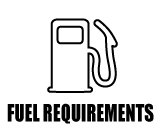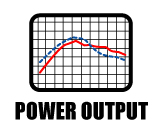Map Notes for 2004-2006 STi
Supported Vehicles:
USDM 2004-2006 STi
Map Revision:
| Map | Version |
|---|---|
| Stage1 | v400 |
Map Availability:
- Download from the COBB Tuning Subaru WRX OTS Map Database.
Required Accessport Firmware:
- V3: 1.7.4.0-17431 or greater
Map | Peak Gains* |
|---|---|
Stage1 ACN 91 | +7% HP / +13% TQ over stock |
| Stage1 91 | +7% HP / +13% TQ over stock |
| Stage1 93 | +8% HP / +13% TQ over stock |
Stage 1
- Intake Requirements: Stock airbox or COBB Tuning SF Intake SUB00001IA
- Exhaust Requirements: Stock or COBB Cat-Back Exhaust 512100
- Boost Target:
- ACN91: ~16.5psi peak boost pressure tapering down to ~14.5psi by the 7000RPM redline, +/- 0.8 psi
- 91 Octane 95 RON Minimum: ~16.5psi peak boost pressure tapering down to ~14.5psi by the 7000RPM redline, +/- 0.8 psi
- 93 Octane 98 RON Minimum: ~16.5psi peak boost pressure tapering down to ~14.5psi by the 7000RPM redline, +/- 0.8 psi
*Peak gains are measured as the difference between the highest points of the two plots.
*Largest gains are measured as the largest gain at any single point between the two plots.
Results may vary. Power as tested on 2004-2006 STi vehicles using these identical calibrations. Generally speaking, the 91 and ACN91 calibrations run slightly lower boost, have a richer fuel curve, and a less aggressive ignition advance map to help compensate for 91 octane fuel; Arizona, California, and Nevada 91 octane fuel; and/or less than ideal atmospheric conditions. The maps designed for 93 octane are the most aggressive.
Non-Performance Maps
Anti-Theft Mode
- Will not allow vehicle to start
Economy Mode MT
- Fuel Requirements: 91 octane or better
- Intake Requirements: Stock airbox or COBB Tuning SF Intake
- Exhaust Requirements: Stock exhaust or upgraded turbo-back exhaust
- Boost Control Solenoid: Stock boost solenoid or COBB 3-port Boost Control Solenoid
- Boost Targets: Mechanical minimum (typically around 6psi - 12psi)
- Rev Limiter: 7000 RPM
* Not intended for aggressive driving*
Valet Mode MT
- Fuel Requirements: 91 octane or better
- Intake Requirements: Stock airbox or COBB Tuning SF Intake
- Exhaust Requirements: Stock exhaust or upgraded turbo-back exhaust
- Boost Control Solenoid: Stock boost solenoid or COBB 3-port Boost Control Solenoid
- Boost Targets: Mechanical minimum (typically around 6psi - 12psi)
- Rev Limiter: 3200 RPM
All Stage1 performance maps include a “HWG” and “LWG”:
- HWG: Higher wastegate duty cycles (HWG) for use when normal wastegate calibration produces lower than targeted boost (i.e. under boost).
- LWG: Lower wastegate duty cycles (LWG) for use when normal wastegate calibration produces higher than targeted boost (i.e. over boost).
* The addition of any other hardware may make the vehicle perform poorly.
** No other intakes, turbochargers, or fuel injectors are certified as compatible with these maps. **
Monitoring Boost Levels:
The best way to determine if you are hitting target boost is to watch the TD Boost Error parameter. This parameter is your target boost (including altitude and temperature compensations) minus your actual boost (negative values mean you are over the target by the amount while positive values mean you are under). Ideally you want this value to be between 0 and 1.0 at wide open throttle (WOT), but -1.0 to 1.0 is acceptable assuming that you don’t have any significant knock corrections. Overboosting is more likely to occur in higher gears and with colder outside temperatures, so be sure to verify boost levels during these conditions.
High Altitude:
A quick note for those of you that live at higher altitudes. It is common for turbocharged cars at higher altitudes to run less boost pressure due to lower air pressure and air density. Your turbocharger has to work harder to compress a less dense air mass compared to the same turbocharger at sea level. This must be factored in when determining if your turbocharger is running the proper amount of boost pressure and not being pushed beyond its efficiency range.
Example: If you live in Denver at 5280 ft and are trying to run a peak boost pressure of 15 psi, your turbocharger has to work the equivalent of making ~17.5 psi at sea level.
There are barometric compensations within the factory ECU that lower boost targets as you climb in altitude in an effort to keep the turbocharger in its optimal range. The COBB performance maps utilize these compensations and therefore, it is perfectly normal for the final boost target to be lower than what is listed for your map.
Revision Notes:
| Version # | Notes |
|---|---|
| v400 | Maps updated to eliminate unnecessary DTC Supression or updated versions for parity with other maps/vehicles within the platform |
| v350 | This map eliminates unnecessary DTC suppression. |
| v300 | Now compatible with Launch Control and Flat-Foot Shifting (LC/FFS) features (MT only). For complete details on how to enable and use the LC/FFS functionality, please visit this FAQ. These maps have been created with the newly-released AccessTUNER Pro 1.9.0.0. Maps created with this version of AccessTUNER software require the latest AccessPORT firmware (version 1.6.4.0-1189 or greater) be installed. All AccessPORTs must first be updated before using maps created with this latest AccessTUNER version. AccessPORT Manager 2.0 will automatically update the AccessPORT to the latest firmware version and is available for download on the COBB Tuning Support web page. |
| v111 | This map has been updated to latest AccessTUNER file format, v1.11. |
| v110 | This map has been updated to latest AccessTUNER file format, v1.10. Increased boost cut by ~1.5psi (0.1 bar). Minor smoothing of fuel and timing maps for improved driving quality. |
| v104 | Skipped. Syncing version numbers to reduce confusion. |
| v103 | Revised boost mapping to assist in more accurate boost targeting. |
| v102 | Revised wastegate duty cycle tables to accommodate for an obvious tolerance range from the factory VF39 turbochargers. Not all vehicles were producing consistent boost levels, even in testing unmapped, unmodified cars. Developed a wider variety mapping with different wastegate duty cycle tables to accommodate for this tolerance. Fixed error with speed limiter. Moved from 147mph to 186mph |
| v101 | Revised fuel mapping to compensate for initial testing at altitude versus additional testing at sea level. Verified accuracy of altitude compensations in base mapping. 1.00 - Original Mapping. Adjusted Fuel, Timing, Boost closed loop control, and base programming logic. |
Copyright 2024 © COBB Tuning Products LLC. All Rights Reserved. | www.cobbtuning.com


